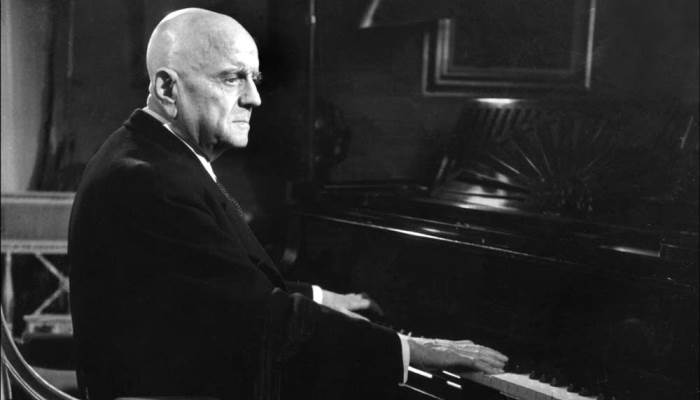Sibelius’ Fifth Symphony: A Pioneering Masterpiece

When Jean Sibelius first started work on his Fifth Symphony in 1915, the type of symphony he set out to write had, for the most part, already been mastered and perhaps even overused. The ethereal “open-space” introduction, smooth melodies, luscious harmonies and final triumphant climax had become the norm of the great symphonies and their ever-growing orchestral forces. So why is Sibelius’ Fifth Symphony—a relatively modest work in scope, length and size—so recognized as a pioneering masterpiece? In this work, Sibelius tapped into the unique personal voice for which he is most remembered.
The symphony starts in a familiar way, with long tones and horn calls. These familiar sounds begin almost every symphony of Mahler and Bruckner, but something is different. Sibelius hones a more controlled space, welcoming a calming stillness. The thin textures and close harmonies make every subtle shift noticeably glisten.
One of the more obvious differences is the final bars of the piece. The powerful and glorious theme that Sibelius presented earlier in the last movement is not matched with the expected recall. Sibelius favors an accumulative build with fragments of the main theme stretched and drawn-out. In stark juxtaposition, what follows are quick chords among potent silence to end the work.
Sibelius handled a classic ending in a clever way. He keeps the lively undercurrent under complete control. The main theme never becomes saturated, leaving the delicately orchestrated material fresh in heart and mind after leaving the concert hall.
In just three movements, and using an orchestra less than half the size than what was popular at the time, Sibelius captured the grand landscape of the major symphonies and designed a new sphere for himself without submitting to the more radical procedures of his contemporaries. Sibelius’ path in the musical landscape of the 20th century was set and his “modernist” persona was established—and it arrived in the form of his Fifth Symphony.
Hear the NJSO perform this unique symphony alongside works by Mendelssohn and Fagerlund May 3–6 in Englewood, Newark and Morristown.